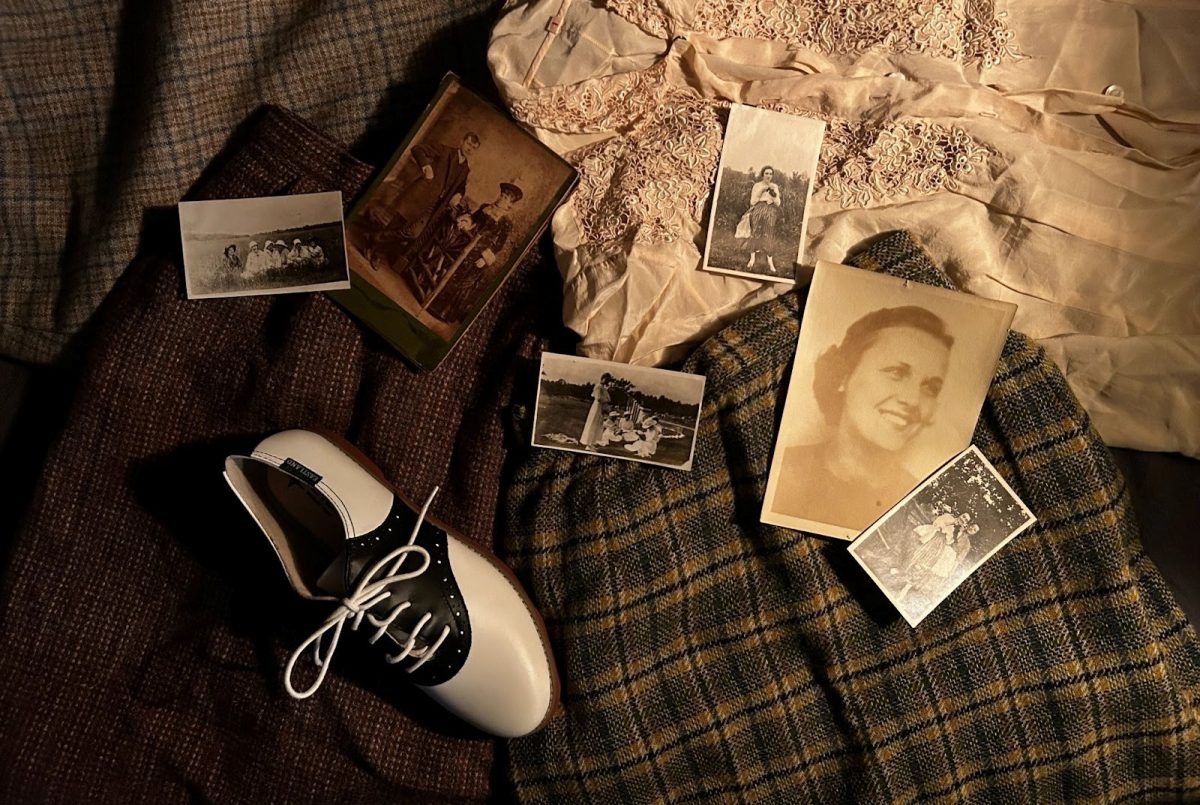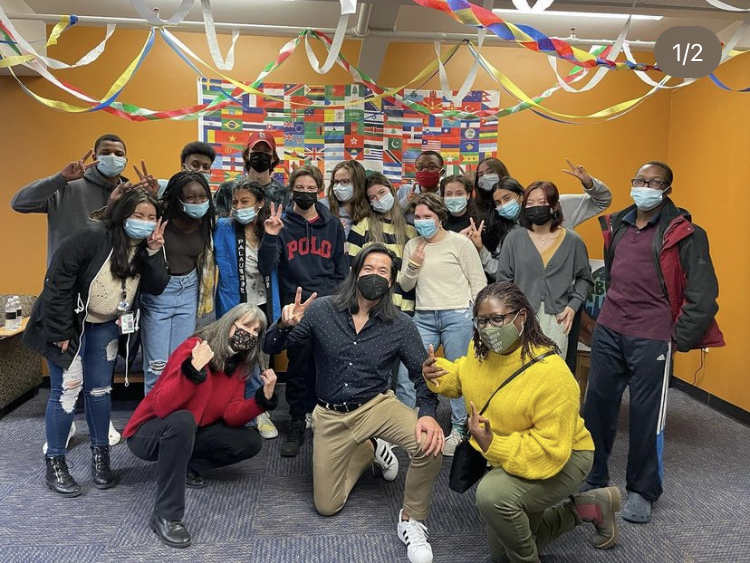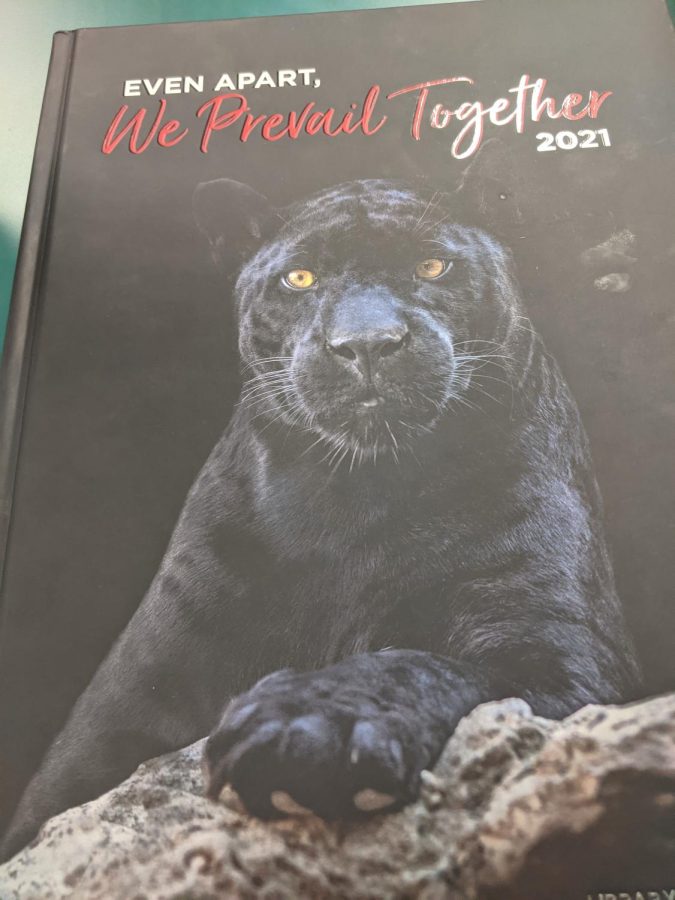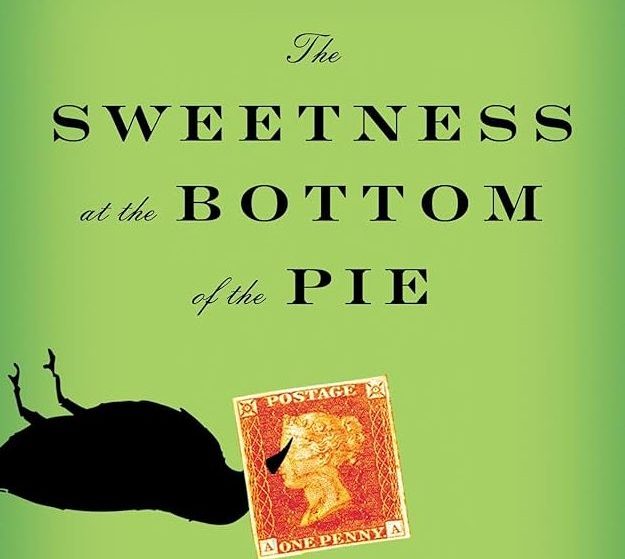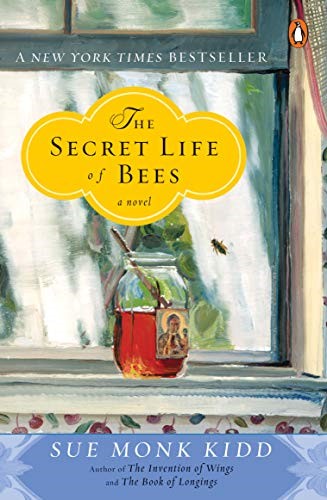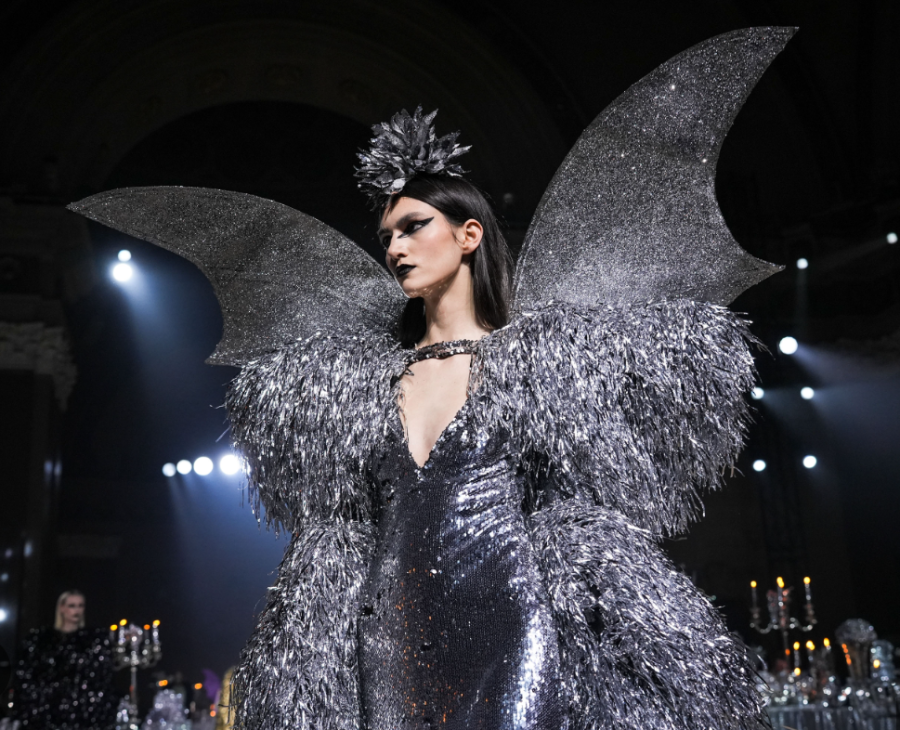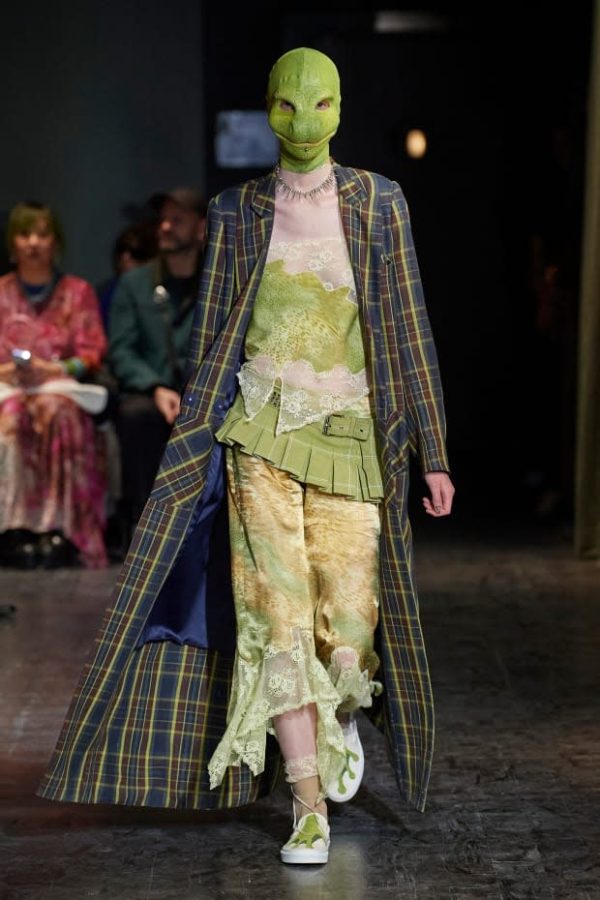New York Fashion Week: Transcending Boundaries
Designers Ignore Current Trends, Create New Realities
Sean Zanni/Patrick McMullan/Getty Images
Designer Rodarte’s eccentric and whimsical creation captivating the audience and proved that current, wearable trends did not fit on the runway.
March 3, 2023
New York Fashion Week’s exhibits of the fall and winter styles makes way for a new dawn of ordinary, “wearable” clothes on the runway, putting an end to the extravagant looks from previous years. Despite this general pattern observed in various shows, from Dion Lee to Coach, several designers chose to not only reject this new day, but to transcend entirely the boundaries of fashion in time and space. With their displays, these designers immersed their spectators into an alternate reality altogether and crafted a new, eccentric dimension unlike the generic, “wearable” presentations that took New York Fashion Week by storm.
NYFW kicked off with an exhibit concocted by Rodarte, an American fashion house established by sisters Kate and Laura Mulleavy. “Our dad is a mycologist … and our mom is an artist, which I think explains a lot about this collection,” says Kate Mulleavy in an interview with Purple Magazine. Indeed, Rodarte transports us to a whimsical reality many critics have described as a “Celtic folktale” with its display of flower bouquets, fairy wings, and mythical character prints. The Mulleavy sisters pulled inspiration from the gothic glamor of the film Black Swan with heavy eyeliner, lace detailed black dresses, and dark lipstick. In addition, the pale foundation painted onto the models and excessive contour accentuating their cheekbones imitates Tim Burton’s films. From the opening show of NYFW, spectators were hurled into a gothic fantasy of enchanted forests and folkloric pixies.
Two presentations after Rodarte came that of Collina Strada, a sustainable brand founded by Hillary Taymour. While Rodarte constructed a dimension of elegant mystique, Strada’s exhibit “Don’t Eat My Friends” can only be described as twisted. In a political statement against meat consumption, the fashion house dresses its models in loud animal prints, using makeup and prosthetics to shape-shift them into anthropomorphic creatures. Some mannequins even crawl on all fours down the runway, rubbing their heads against the legs of front row spectators, or licking the back of their hands. The brand reports that its goal was to celebrate humans’ “primal truths.” As disturbing and controversial this exhibit was, it certainly surpassed boundaries to create a new reality- a new reality many wanted no part of, but a new reality all the same.
Valentine’s Day sees the immaculate homage to 1943 French classic Le Petit Prince crafted by Thom Browne, who makes his return to NYFW after presenting in Paris for years. In an interview with Vanity Fair after the show, Browne says, “I was really inspired by how The Little Prince tells the story about how kids understand everything and see things more clearly than adults do.” Browne hits the nail right on the head by using the perspective of a child to depict a line of corporate zombies wearing tweed suits and carrying briefcases displaying the time as they walk monotonously to the beat of the ticking clock. Browne uses his fashion to accompany the narrative that we have become slaves to time because we have lost our childlike innocence – a theme that not only exists in the world he has built, but can also be applied to our own reality.
In the span of one week, audiences witnessed this polarizing divide of the “out with the old, in with the new.” This drastic shift from unconventional clothing to wardrobe staples can, in part, be explained by the pandemic outbreak. In times of isolation, we turn to our phones for entertainment, and only the most extreme designs can catch our attention. Now that people are going back to work, there is naturally a higher demand for practical pieces, for these outrageous attires can only be afforded by the richest celebrities fighting for headlines in the media. However, rather than allowing their designs to gain attention through the stars that wear them, these designers made the headlines themselves through the intricate narratives they created.
With the end of NYFW comes the passing of the torch to the London, Milan, and Paris fall/winter Fashion Weeks. Time will only tell if designers have decided to turn to this new page of “wearable” runway fashion, or to reject reality altogether and continue to transcend boundaries like Rodarte, Collina Strada, and Thom Browne. Either way, spectators must be ready for limits to be pushed and new realms to be created.






